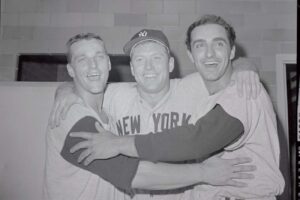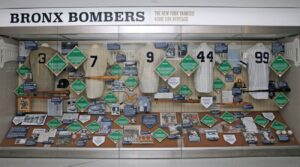1961 World Series: M&M boys drive Yankees to the championship
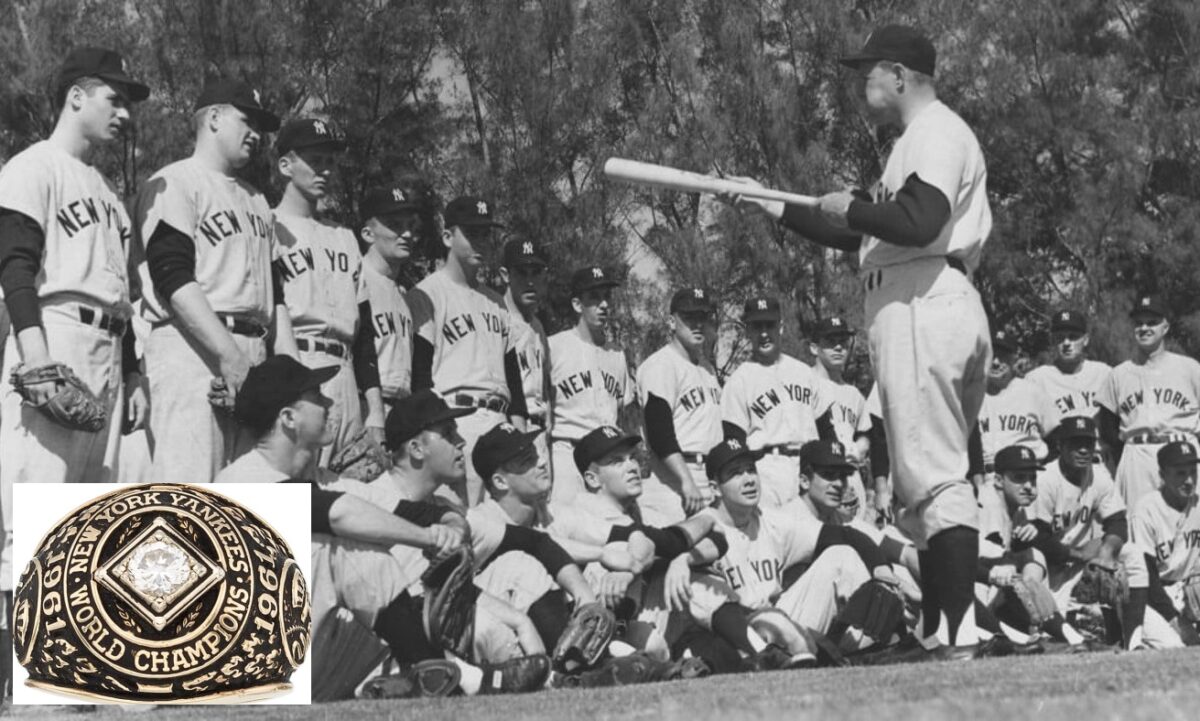
Table of Contents
| The Event | 1961 World Series |
| The Opponent | Cincinnati Reds |
| The Score | New York Yankees (4) Cincinnati Reds (1) |
| Date | October 4–9 |
| Venues | Yankee Stadium (New York) Crossley Field (Cincinnati) |
| The MVP | Whitey Ford |
| The most memorable game | Game 3 |
| Yankees Batting heroes | Mickey Mantle, Roger Maris, Johnny Blanchard, and Yogi Berra |
| Yankees Pitching heroes | Whitey Ford, Ralph Terry, and Luis Arroyo |
| Regular season team record | 109–53 |
| AL position | No.1 |
| Yankees Manager | Ralph Houk |
The 1961 World Series saw the New York Yankees decimating the Cincinnati Reds to win their 19th championship. It came riding on the back of an unforgettable season for the Yankees. This was the year when Mickey Mantle and Roger Maris, two of the Yankees’ best players, tried to hit more home runs than anyone ever had in a single season. Babe Ruth had hit 60 home runs in 1927, and Mantle and Maris went on a homer spree to beat that record. Maris did it with 61 home runs in that season, and his record stood in the American League until 2022 when Yankees slugger Aaron Judge hit 62 home runs.
The Yankees were really good that year. They won 109 games and lost 53, which got them a ticket to the World Series. They played against the Cincinnati Reds. After five exciting games, the Yankees came out top and became champions for the 19th time with the 1961 World Series triumph.
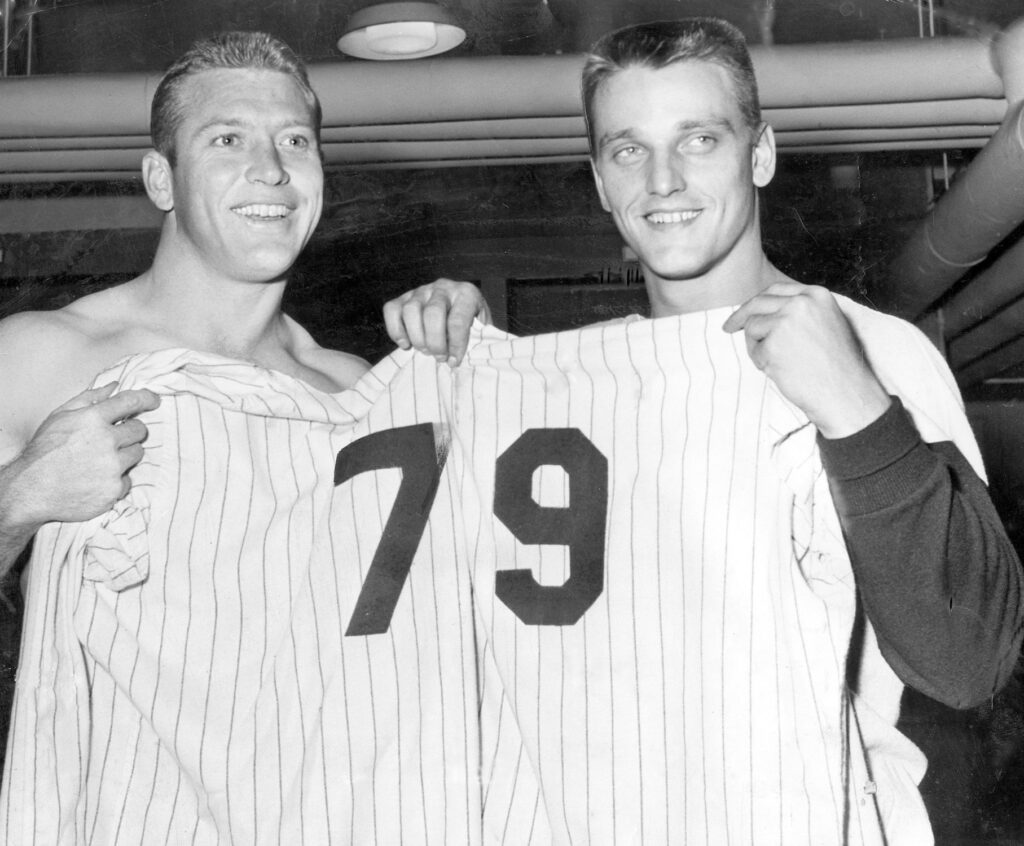
The prelude to the 1961 World Series: Yankees’ record-breaking regular season
| Regular season batting average | .263 |
| Best individual record | Roger Maris (.269) |
| Regular-season pitching ERA | 3.46 |
| Best individual record | Whitey Ford (3.21) |
The season leading to the 1961 World Series was special because of the competition between Mickey Mantle and Roger Maris. The M&M boys tried to out-perform Babe Ruth’s record of hitting 60 home runs in a season. Maris broke the record by hitting his 61st home run on the last day of the season, October 1. He also had seven games where he hit more than one home run, and in a doubleheader against the Chicago White Sox, he hit four home runs.
In 1961, the American League, where the Yankees played, added two more teams, making a total of ten teams instead of the usual eight. This was the first time they expanded the league in its 61-year history. They also changed the number of games teams played in a season. Before, it was 154 games, but now it is 162 games. This change caused some problems because Roger Maris had to try to break Babe Ruth’s record by playing eight more games than Babe Ruth did when he set the record.
When Roger Maris broke Babe Ruth’s record in the 162nd game of the season, the head of baseball, Ford Frick, added a symbol called “The Asterisk.” This symbol meant that Maris had set the record in a longer season than Babe Ruth did, and it also meant that people couldn’t really say Maris was the real record-holder. This caused a lot of debate. Then, in 1991, another commissioner named Fay Vincent decided to take away “The Asterisk.” This meant that Maris was officially recognized as the record-holder for hitting the most home runs in a single season. Sadly, Maris had already passed away in 1985, so he never got to know that he was the true record holder.
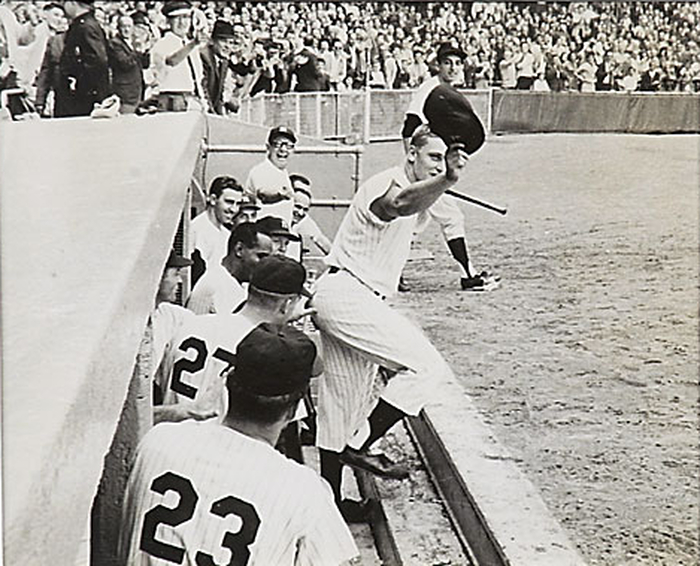
Apart from Maris and Mantle’s accomplishments, the 1961 Yankees as a team also achieved something impressive and that was visible through the 1961 World Series. They hit a record-breaking 240 home runs in a single season. This record remained unbroken until 1996, when the Baltimore Orioles, who had the designated hitter in their lineup, managed to hit even more home runs as a team, reaching a total of 257.
In 1961, the American League added two more teams, making a total of ten teams in the league. This change led to more teams and pitchers, which could have made the competition a bit easier. However, the Yankees’ strong lineup remained largely unchanged. This led to a surge in home runs for the Yankees. There’s a well-known photo of six 1961 Yankee players standing together: Mantle, Maris, Yogi Berra, Elston Howard, Johnny Blanchard, and Bill Skowron. They were nicknamed “Murderers Row” because, together, they hit a total of 207 home runs that year. This nickname, which was first used in 1918, was originally associated with the Yankees of the late 1920s, who were also known as “Murderers Row” due to their powerful hitting lineup.
As the middle of the season neared, it looked like there was a good chance that either Maris or Mantle or maybe even both, could break Babe Ruth’s home run record that had stood for 34 years. But unlike the home run contest in 1998 between Mark McGwire and Sammy Sosa, which got a lot of positive media attention, the sportswriters in 1961 started to create a rivalry between Maris and Mantle, even though there wasn’t really one. But it helped the Yankees got into and won the 1961 World Series.
The competition between Maris and Mantle to hit the most home runs in 1961 was turned into a movie called “61*” in 2001. Billy Crystal directed the movie.
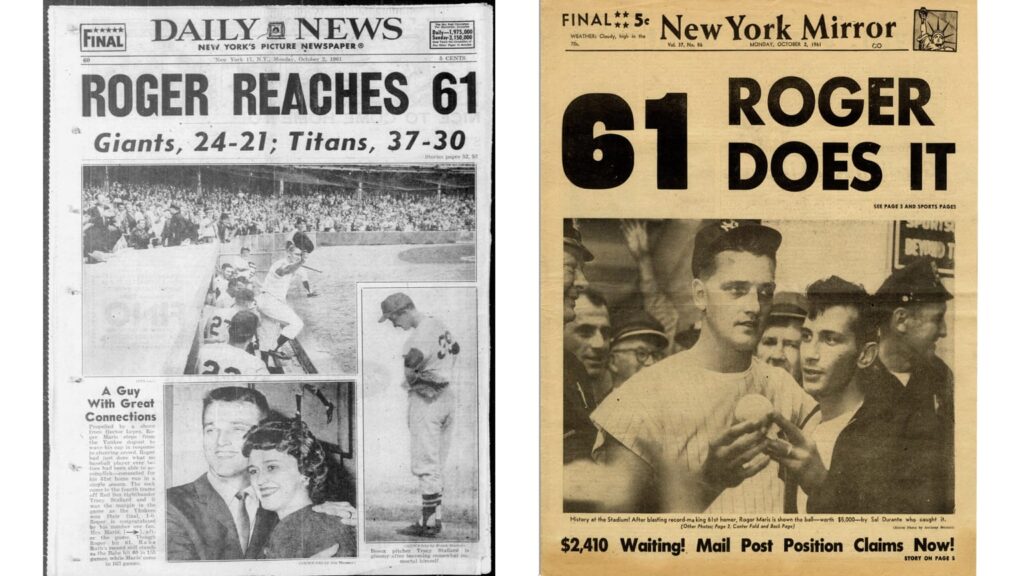
The 1961 World Series
| The Opponent | Cincinnati Reds |
| The Score | New York Yankees (4) Cincinnati Reds (1) |
| Date | October 4–9 |
| Venues | Yankee Stadium (New York) Crossley Field (Cincinnati) |
| The MVP | Whitey Ford |
| The memorable game | Game 3 |
| Game 1 | Result: Yankees 2-0 Reds Place: Yankee Stadium The Crowd in attendance: 62,397 |
| Game 2 | Result: Yankees 2-6 Red Place: Yankee Stadium The Crowd in attendance: 63,083 |
| Game 3 | Result: Yankees 3-2 Reds Place: Crosley Field The Crowd in attendance: 32,589 |
| Game 4 | Result: Yankees 7-0 Reds Place: Crosley Field The Crowd in attendance: 32,589 |
| Game 5 | Result: Yankees 13-5 Reds Place: Crosley Field The Crowd in attendance: 32,589 |
The 1961 World Series was a seven-game series between the New York Yankees and the Cincinnati Reds. The Yankees won it in five games, becoming champions for the 19th time in 39 seasons. Whitey Ford, a pitcher for the Yankees, was named the Most Valuable Player of the 1961 World Series for his outstanding performance, winning two games and not allowing any runs in 14 innings.
During the 1961 World Series, there were some playful political jokes related to the Cold War, comparing the “Reds” (Cincinnati Reds) against the “Yanks” (New York Yankees). However, the big focus was on the “M&M Boys,” which were Roger Maris and Mickey Mantle, both Yankees players. Throughout the season, they were chasing Babe Ruth’s record for the most home runs in a single season, set back in 1927. In the end, Mantle hit 54 home runs, but Maris managed to break the record with 61 on the final day of the season.
Ralph Houk, the Yankees’ new manager, who had replaced Casey Stengel, was in charge for the 1961 World Series. They secured the American League championship by performing better than the Detroit Tigers by eight games. The Yankees achieved another milestone by hitting 240 home runs in a single season, setting a record for Major League Baseball and booking a beth in the 1961 World Series. Alongside Maris and Mantle, several other Yankees players, including Yogi Berra, Elston Howard, Bill Skowron, and Johnny Blanchard, also hit more than 20 home runs. Ford, who won the Cy Young Award with a record of 25 wins and 4 losses and a 3.21 earned run average, served as the team’s anchor pitcher.
The underdogs in the 1961 World Series were the Cincinnati Reds, who had Fred Hutchinson as their manager. They finished four games ahead of the Los Angeles Dodgers in the National League (NL) standings. The Reds had their own powerful hitters, with four players hitting more than 20 home runs: NL Most Valuable Player (MVP) Frank Robinson, Gordy Coleman, Gene Freese, and Wally Post. The team used platoons for the second base, shortstop, and catcher positions. Vada Pinson, the center fielder, topped the league with 208 hits and had the second-highest batting average of.343. Along with Jim O’Toole and Bob Purkey, Joey Jay (21-10, 3.53 ERA) was the pitching staff’s leader.
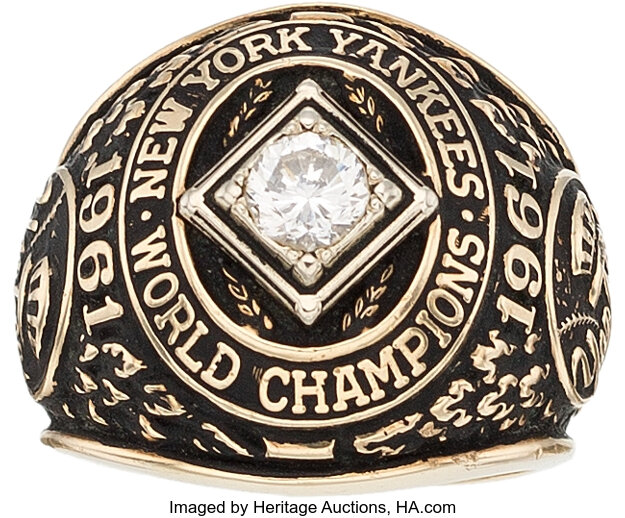
In Game 4 of the 1961 World Series, Whitey Ford had to leave the sixth inning because of an ankle injury. He set a record by pitching without allowing runs in World Series games and reaching 32 consecutive innings. Babe Ruth had previously held the record for the Boston Red Sox where he pitched 29 and two-thirds consecutive scoreless innings in 1916 and 1918. Ford later extended this record to 33 and two-thirds innings in the 1962 World Series.
The 1961 World Series lasted only five games, making it the shortest since 1954 when the New York Giants defeated the Cleveland Indians in four games. Interestingly, these same two teams would face each other again 15 years later in the 1976 World Series, where the Reds would win in a clean sweep over four games.
Game 1: Yankees 2-0 Red
At Yankee Stadium, Whitey Ford achieved his third consecutive World Series shutout. Elston Howard’s home run in the fourth inning, directed into the lower right-field stands, was all Ford needed for victory. In the sixth inning, Moose Skowron added another home run into lower left field, making the score 2-0. The game lasted two hours and eleven minutes and only saw two hits by the Reds: a single by Eddie Kasko in the first inning and another single by Wally Post in the fifth inning of the first game of the 1961 World Series. The only Reds player to reach base was Frank Robinson, who walked in the seventh inning. Ford recorded six strikeouts, while Jim O’Toole allowed six hits in seven innings.
Ford received valuable help from his teammate, third baseman Clete Boyer, who made two defensive plays. Boyer expertly fielded a Gene Freese ground ball hit close to the base in the second inning, quickly turned, and threw out the batter while still on his knees. Then, in the eighth inning, Boyer dove to his left and landed on his stomach to catch a ground ball that Dick Gernert hit. Despite being on the ground, Boyer managed to throw out Gernert, showcasing his exceptional defensive skills and played a part in the 1961 World Series Game 1 win.
Game 2: Yankees 2-6 Red
The Reds made a strong comeback with excellent pitching from Joey Jay, which helped them win Game 2 and tie the 1961 World Series. In the fourth inning, the Reds’ first baseman, Gordy Coleman, and the Yankees’ left fielder, Yogi Berra, hit two-run homers. Coleman’s home run went into the bleachers in right-center field after Frank Robinson reached base due to an error by the Yankees’ third baseman, Clete Boyer. Then, in the bottom half of the same inning, Roger Maris started with a walk, and Berra brought the score even by hitting a home run into the lower right-field stands.
After that, Jay only allowed two more hits: a single by Berra in the sixth inning and another single by Tony Kubek to center field in the eighth. The Reds kept adding to their score with one run in the fifth inning, another in the sixth, and two in the eighth. The decisive moment in Game 2 of the 1961 World Series came with two outs in the fifth when Elio Chacón rushed home from third base after an Elston Howard passed ball that didn’t travel much farther than 15 feet. In the sixth, Yankee starter Ralph Terry gave up one more run as Wally Post hit a double and Johnny Edwards, the eighth-place hitter, drove him in with a single. Terry was taken out in the seventh so pinch-hitter Héctor López could take his place.
In the eighth inning, Luis Arroyo came in to pitch. He walked Robinson, then allowed an infield single to Coleman, but Arroyo’s throw to first was wild, and Robinson scored a run. Coleman tried to reach third base but was thrown out. Wally Post was the following batter, and Berra misplayed his fly ball which resulted in a three-base error. With Post on third base, Gene Freese received an intentional walk for the second time in the game. Then Edwards came up and hit his second double of the game, a blooper to left field, allowing Post to score. Jay, the Reds’ pitcher, secured the victory by retiring six of the last seven batters, with only a walk to Clete Boyer in the ninth inning.
The 1961 World Series games moved to Cincinnati, and the Yankees were under pressure. Remember, they had lost to a team they were supposed to beat (the Pittsburgh Pirates) in the 1960 World Series. This loss led to their manager, Casey Stengel, getting fired. People were concerned that history might repeat itself as the Yankees arrived in Cincinnati with the series tied. In the first two games, the Yankees had only scored four runs and gotten 10 hits. Some of their best hitters, including the “M&M Boys,” were having a hard time performing well.

Game 3: Yankees 3-2 Reds
Cincinnati held the 1961 World Series, its first in 21 years at Crosley Field. A former Red Sox player named Dummy Hoy, who was 99 years old and the oldest living former Major League player at the time, threw the first pitch of the series. Sadly, he passed away two months later after having a stroke, just five months before his 100th birthday.
In Game 3 of the 1961 World Series, the 23-year-old right-hander Bill Stafford from New York faced off against the Reds’ experienced knuckleballer Bob Purkey. Stafford pitched really well for 6 and two-thirds innings. Purkey also showed great control and made it hard for the Yankee hitters to find their rhythm, but in the end, New York came out on top with a home run from Maris in the ninth inning. Even though the Yankees’ offense was still struggling, it managed to be just sufficient for the win.
In the game, Cincinnati scored their first run in the bottom of the third inning. Elio Chacón managed to reach second base after a bunt and a throwing error by Stafford. Following that, Eddie Kasko fouled out to Bill Skowron, and Vada Pinson grounded out, advancing Chacón to third base. Then, Frank Robinson hit a double off the left-field wall, bringing Chacon home and giving Cincinnati a 1-0 lead.
In the seventh inning, the Yankees had a fortunate turn of events that helped them tie the game. Tony Kubek started with a single to center field and then advanced to second base due to a passed ball by Johnny Edwards. After Mickey Mantle struck out, Yogi Berra hit a shallow ball into short right field. However, neither second baseman Chacón nor right fielder Robinson communicated effectively which led to a collision and the ball dropping. This allowed Kubek to score and tie the game. Later in the same inning, the Reds managed to regain the lead. Edwards hit a double into the right-field corner and eventually scored thanks to a single by Kasko to left field. Bud Daley then came in to replace Stafford as the pitcher and ended the inning by making Pinson fly out to right field.
The Reds didn’t hold onto their lead for long because the Yankees managed to even the score in the eighth inning. When there were already two outs, Johnny Blanchard came in to pinch-hit for Daley and hit a knuckleball that Purkey had thrown into the right-field bleachers for a home run. The Reds didn’t make much noise in the bottom of the inning, and the score remained tied at 2–2.
In the ninth inning, Maris managed to get only his second hit of the series, but this one was a powerful hit that went over the right-field bleachers, giving the Yankees a lead with a home run. With their top reliever, Luis Arroyo, on the pitcher’s mound in the ninth, the Yankees were in a strong position. The Reds had one last chance to make a comeback. After Gene Freese struck out, Leo Cárdenas, batting for Johnny Edwards, hit a double that bounced off the left-center field scoreboard. Dick Gernert, who was pinch-hitting for Purkey, hit a ground ball to the shortstop, and Cardenas stayed on second base. The third pinch-hitter in the inning, Gus Bell, ended the Reds’ attempt at a comeback by hitting a ground ball back to the pitcher’s mound, and Arroyo threw it to Skowron at first base. This ended the exciting game and gave the Yankees a two-game lead in the 1961 World Series.
Game 4: Yankees 7-0 Reds
In Game 4 of the 1961 World Series, Whitey Ford took the mound for the Yankees. His goal was to continue his streak of not allowing any runs in the playoffs and, more importantly, to help the Yankees take a 3-1 lead in the Series. He managed to achieve both objectives. Ford began the game by retiring the first nine batters he faced. When Elio Chacón hit a ground ball to Bobby Richardson at second base for the last out in the third inning, Ford surpassed Babe Ruth’s record of 29+2⁄3 consecutive scoreless innings. Ford kept playing until the end of the fifth inning when he had to leave due to a possible ankle injury. His new record stood at 32 consecutive scoreless innings, including the Game 4 of the 1961 World Series. Jim Coates came in to pitch in the sixth inning and continued to keep the Reds from scoring for the next four innings.
The Yankees got their first run of the game in the fourth inning. Roger Maris started with a walk and advanced to third base after Mickey Mantle hit a single to left-center field. Elston Howard then hit a ground ball that resulted in a double play, but Maris managed to score. In the fifth inning, the Yankees scored another run. After receiving a walk, Bobby Richardson hit a single to the right-center field for Whitey Ford. Tony Kubek then hit a single that brought Ford home, adding to the Yankees’ score.
Jim Brosnan, who was in a difficult situation, took O’Toole’s place in the sixth inning. With one out, Howard hit a double to right-center field. After intentionally walking Yogi Berra, Skowron reached the bases by hitting a slow roller to third. Clete Boyer followed with a double to the left, bringing in two runs for the Yankees. The Yankees attempted a safety squeeze play, but Ford’s bunt went straight to Reds’ first baseman Gordy Coleman, who tagged first base. Boyer had advanced to third, and Skowron had started towards home before stopping. Coleman quickly tagged Skowron out, resulting in an unassisted double play.
In the seventh inning, the Yankees scored three additional runs to secure their victory. The seven runs that New York scored in this game were the same number of runs they managed to score in their first three games combined. The Reds had strong starting pitching, and with an injured Mantle, the Yankees’ offense struggled in the previous games. However, things were about to change in Game 5 of the 1961 World Series.
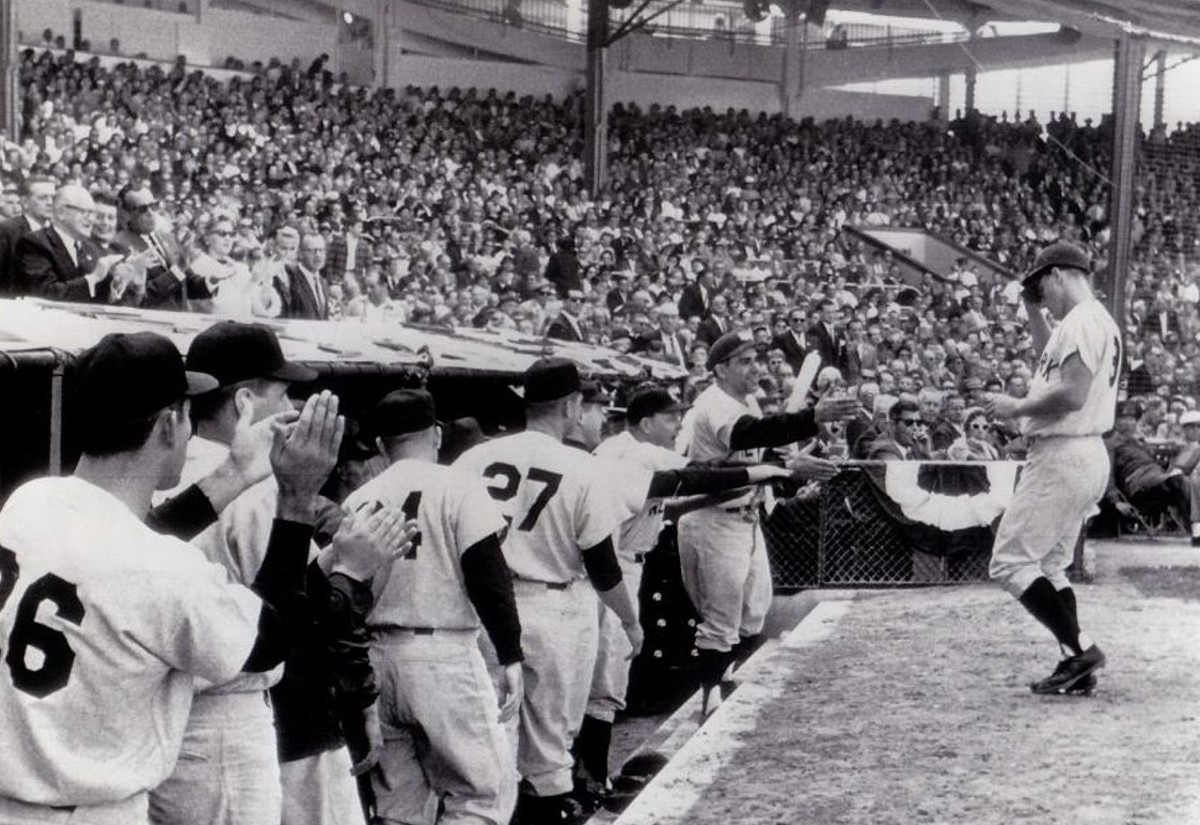
Game 5: Yankees 13-5 Reds
In Game 5, Yogi Berra and Mickey Mantle, who would later become Hall of Famers, didn’t play due to injuries. Berra had a stiff shoulder, while Mantle was still dealing with a hip abscess. However, their replacements, Hector López and Johnny Blanchard, stepped up in a big way. Lopez contributed significantly by driving in five runs with a triple, a home run, and a sacrifice bunt. Blanchard also had a strong performance with three hits, including a double and a home run.
In the first four games of the 1961 World Series, the Yankees managed to score only nine runs against Cincinnati’s starting pitchers. However, in Game 5, New York had a remarkable turnaround by scoring five runs in the very first inning. Joey Jay, who was known for his 14 complete games during the regular season, surprisingly struggled and was taken out after recording only two outs. The game began with a single from Bobby Richardson, followed by fly-outs from Tony Kubek and Roger Maris. Then, Johnny Blanchard hit a two-run homer into the right-field bleachers, kicking off the scoring spree.
Elston Howard’s hit went through an opening in the left-center field scoreboard, resulting in a ground-rule double. Bill Skowron’s long single off the left-field fence brought Howard home. When Jim Maloney took over pitching duties, Héctor López hit a triple that allowed Skowron to score. Clete Boyer kept the momentum going in the final game of the 1961 World Series by doubling off the scoreboard and bringing Lopez home. The Yankees’ pitcher, Ralph Terry, ended the inning with a strikeout, but not before five Yankees had successfully crossed home plate.
New York continued to build their lead in the second inning with a single from Kubek and a double from Maris that just stayed inside the left-field line. The Reds managed to reduce the lead in the bottom of the third inning, causing Terry to be replaced. Following Kasko’s single to the left, Blasingame started the game with a single to the center. Pinson’s fly ball moved Blasingame to third. Then, Robinson hit a three-run home run over the right-center field fence, bringing the Reds closer. Daley took over for Terry and effectively stopped the Reds from scoring anymore.
The Yankees’ offense extended their lead by scoring five runs in the fourth inning. The key moments included Skowron’s two-run single and Lopez’s three-run home run that went straight to the center. The Reds managed to narrow the gap by scoring two runs in the bottom of the fifth inning, thanks to Wally Post’s two-run home run, making the score 11-5. The Yankees sealed their victory by adding two more runs in the sixth inning through sacrifices by Lopez (a squeeze play) and Daley (a fly ball).
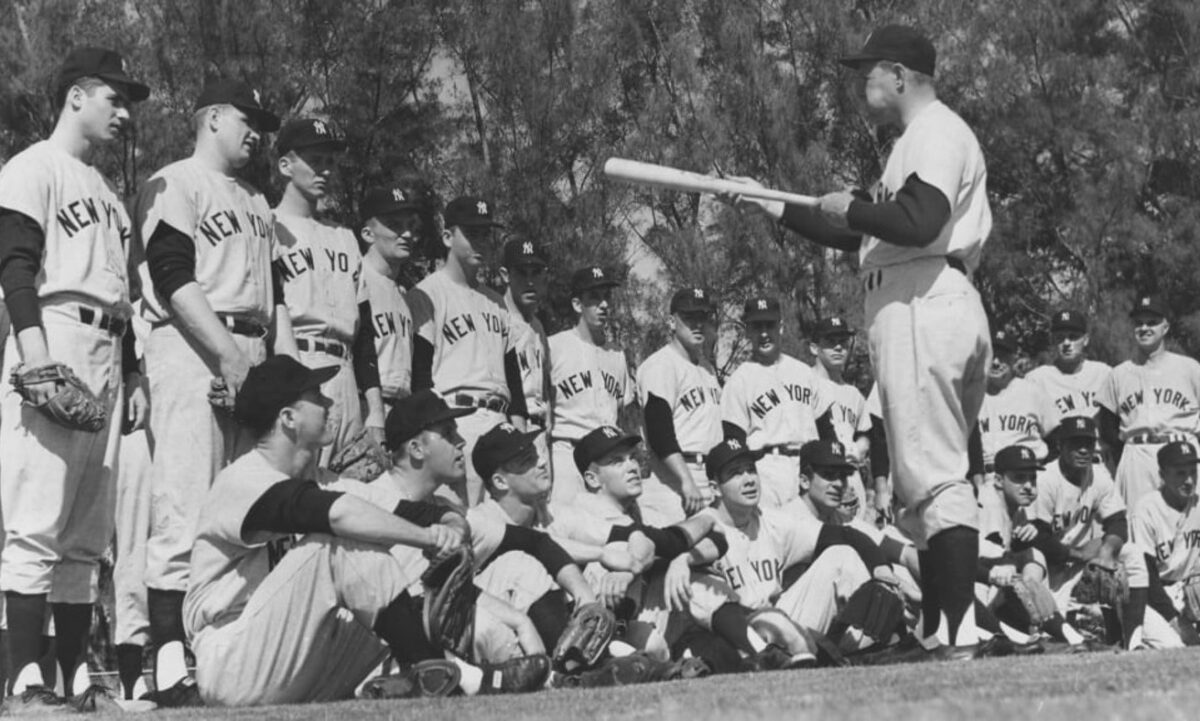
Off the winning path
It is safe to say that the 1961 World Series between the New York Yankees and the Cincinnati Reds is still a memorable event in baseball history. The Yankees’ superiority was on full display, but so were the individual and team efforts that make baseball such a fascinating sport.
Exciting competition between Mickey Mantle and Roger Maris, who both wanted to break Babe Ruth’s single-season home run record, defined the 1961 season. Maris prevailed, ultimately hitting 61 home runs, a feat that cemented his status as a baseball legend. With 240 home runs, the Yankees broke the American League home run record and won the league championship thanks to their outstanding teamwork under manager Ralph Houk.
Game 5 of the 1961 World Series marked the end of World Series matches at Crosley Field, and it also became the last postseason game in Cincinnati until the team shifted to Riverfront Stadium in 1970. Houk achieved a remarkable feat by becoming just the third manager in history to win the World Series in his debut season.
The Yankees and the Reds of Cincinnati met in the 1961 World Series. After five intense games, the Yankees were crowned World Series champions for the 19th time. Whitey Ford won the Most Valuable Player award thanks to his brilliant pitching performance, which saw him go undefeated through 14 innings while picking up two victories. Despite losing Berra and Mantle, the Yankees’ lineup showed resilience because of the play of Héctor López and Johnny Blanchard, among others.
Both baseball and the Yankees were undergoing significant changes during the 1961 World Series. A longer season and the addition of two more clubs to the American League pushed the players to the limits of their stamina and talent. Media coverage of the rivalry between Mantle and Maris, as depicted in the film “61*,” ratcheted up the intensity of an already thrilling baseball season. The Yankees’ victory in the 1961 World Series resonated with fans and emphasized the true meaning of baseball by showcasing the power of collaboration, resilience, and dedication.
What do you think? Leave your comment below
- Categories: 1961 World Series, 1961 Yankees, Mickey Mantle, Roger Maris
- Tags: 1961 World Series, 1961 Yankees, Mickey Mantle, Roger Maris
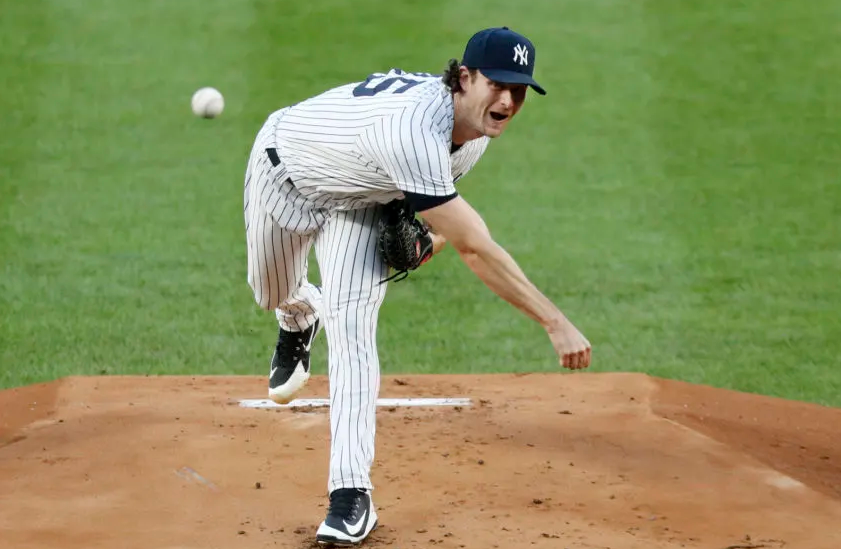


 Follow Us
Follow Us
